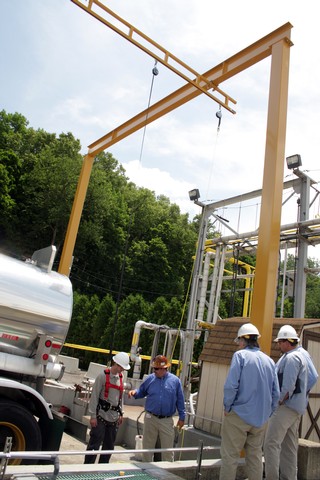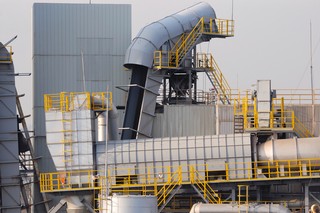
What is the Difference Between Passive and Active Fall Protection
September 23, 2011
When a fall hazard has been identified in the workplace, the need for fall protection has been established. But having a fall protection system does not necessarily mean that it’s time to call your local safety supplier to buy harnesses and lanyards. When the need for fall protection has been established, there are two distinct solutions. All fall protection systems can be identified as either passive or active. So what is the difference between Passive and Active Fall Protection?
Passive Fall Protection Systems
A “passive” fall protection system refers to a system that is non-dynamic, stationary, and does not move, adapt, or change when in or out of use. Passive systems don’t require the use of personal protective equipment or active participation from the worker. Typically, passive systems include netting, handrails, and guardrails. Passive systems are most appropriate in architectural designs and working environments where fall hazards cannot be solved through engineering controls.

Active Fall Protection Systems
Unlike passive systems, active fall protection systems are dynamic and require the use of special equipment as well as worker participation. There are two types of active fall protection systems, fall restraint and fall arrest systems. All active fall protection systems share the common feature of securing a harnessed worker to an anchorage point with a lanyard. Fall restraint systems typically use a fixed-length lanyard (or dog leash) to keep a worker’s center of gravity from going over a fall hazard leading edge. Fall arrest systems incorporate various types of lanyards, including rip stitch lanyards and SRLs, all designed to stop a freefalling worker from impacting a lower level. Active fall protection systems are sometimes referred to as a PFAS or a Personal Fall Arrest System.
Active systems include, but are not limited to, immovable point fall protection systems, vertical fall protection systems, or horizontal fall protection systems. Each type of active fall protection has specific advantages. For example, a large industrial workspace with a strong overhead support structure would be the ideal setting for a horizontal system. An unprotected radio tower would be the perfect setting for a vertical fall protection system. A high-rise window cleaning operation where overhead fall protection is not feasible would be an application for an immovable point system. Rigid Lifelines designs both active horizontal fall restraint and fall arrest systems.

A fall protection trainer describes the various components of the active fall protection system that his trainee is attached to.
Active systems, in particular fall arrest systems, are comprised of critical working parts, including the anchorage, full-body harness, lanyard, and connectors, which are typically carabiners and snap hooks. A fall arrest system is not complete unless all four of these parts are included and are properly used. Whether your worksite integrates passive or active fall protection systems, proper worker training, system maintenance, and regular inspection of all fall protection system equipment are essential elements in maximizing the effectiveness of a system. Frequently, systems are available in kit form and ready to install. Some manufacturers provide customers with the opportunity to order custom-fabricated systems to meet the specific fall protection needs of their facility. Whatever your needs may be, be sure to select the fall protection system that maximizes workplace productivity, while minimizing both risk and cost.
Thanks for reading!
By Michael Evanko
Categories
Share this post
Let us help you
Contact us today to find the perfect product fit for your job

